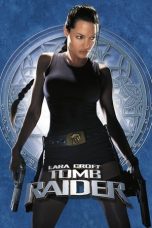- Source: Jesse William Lazear
Jesse William Lazear (May 2, 1866 – September 25, 1900) was an American physician, best known for deliberately allowing a mosquito to bite him to prove it was how yellow fever was transmitted. His hypothesis was correct and he died 17 days after the transmission.
Background
Lazear was the son of William and Charlotte née Pettigrew. He attended Trinity Hall Military Academy and Washington & Jefferson College, both in Washington, Pennsylvania, and obtained his Bachelor of Arts in 1889 from Johns Hopkins University and his PhD in Medicine in 1892 from the Medical School at the Columbia University College of Physicians and Surgeons. He did his specialization in Paris at the Institut Pasteur. In 1896 he married Mabel Houston with whom he had two children. He was also a member of the Phi Kappa Psi fraternity.
Career
Lazear was a physician at the Johns Hopkins Hospital in Baltimore starting in 1895, where he studied malaria and yellow fever. In 1900 he reported for duty as the assistant surgeon at Columbia Barracks (Quemados, Cuba) for the United States Army.
After a few months in Quemados, Lazear, together with Walter Reed (1851–1902), James Carroll (1854–1907) and Aristides Agramonte (1869–1931), participated in a commission studying the transmission of yellow fever, the Yellow Fever Board. During his research at Camp Colombia, he confirmed the 1881 hypothesis of Carlos Finlay that mosquitoes transmitted this disease. Lazear was the only member of the commission who had experience working with mosquitoes, and he used mosquito larvae from Finlay's laboratory. He wrote to his wife in a letter dated September 8, 1900, "I rather think I am on the track of the real germ." Lazear deliberately allowed an infected mosquito to bite him in order to study the disease. He contracted the disease and died at age 34, seventeen days after writing his hopeful letter. The fact that this was a deliberate act was covered up at the time—for reasons unknown, but possibly connected with family insurance policies—and the story put about that Lazear had mistaken the mosquito for an uninfected one of a different species. The truth was discovered in 1947 by Philip S. Hench from Lazear's own notebook.
A dormitory at Johns Hopkins University was named after him in honor of his sacrifice, as was a former chemistry building at Washington & Jefferson College, Lazear's alma mater.
There is a memorial in the "Sacrifice" stained glass window at the altar of the War Memorial Chapel at the Washington National Cathedral dedicated to Jesse Lazear showing him, an injection needle and a mosquito.
See also
Human experimentation in the United States
References
External links
University of Virginia, Philip S. Hench – Walter Reed Yellow Fever Collection: Jesse Lazear Biography
University of Virginia, Yellow Fever and the Reed Commission: The Walter Reed Commission
University of Virginia Health Sciences Library, A Guide to the Philip S. Hench Walter Reed Yellow Fever Collection This extensive collection includes 154 boxes of items. See particularly the Biographical Section on Lazear and Series I. Jesse W. Lazear, Boxes 1-6
Kata Kunci Pencarian:
- Jesse William Lazear
- Lazear
- Jesse Lazear
- Walter Reed
- Jesse (given name)
- James Carroll (scientist)
- Peter Agre
- Healthcare in Cuba
- Yellow fever
- Self-experimentation in medicine
Piece by Piece (2024)
Unforgiven (1992)
Pirates of the Caribbean: The Curse of the Black Pearl (2003)
Lara Croft: Tomb Raider (2001)
No More Posts Available.
No more pages to load.












